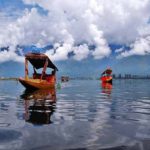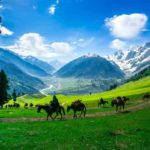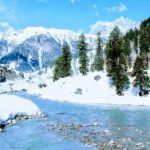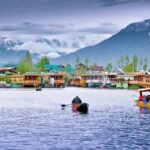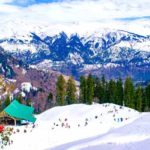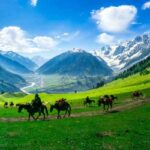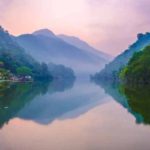Top 10 Places To Visit In Srinagar The largest city situated in Jammu and Kashmir is Srinagar, also known as India’s summer capital. The name of the city is derived from two Sanskrit works, namely “sri,” meaning sun, and “Nagar,” meaning city. It is situated on the banks of the Jhelum River in the Kashmir valley. Along with the waterfront and the stunning houseboats it has the town is renowned for its flora and fauna. No wonder it is often referred to as the Earth’s paradise. In addition, the traditional crafts and dried fruits available in Srinagar are a special attraction as well. Srinagar is a town with a nice climate, and the best time to visit Srinagar is from April to October. During these months, the flowers of the city blossom, making the place a sanctuary for all its inhabitants, tourists and visitors. In addition, these months are when one can do different awesome activities and get new experiences from them. There are so many places to visit in Srinagar that are beautiful and can make you feel like you’re in utopia. The city is situated between trees, mountains and lakes. The city lies on the banks of the Jhelum River at an elevation of 5,200 feet, making the city’s weather so hot and cool to enjoy.
Dal Lake
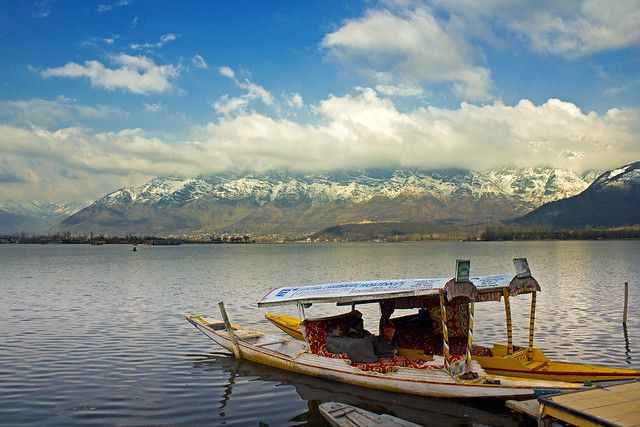
Dal is a lake in Srinagar (Dal Lake is a misnomer since Dal means lake in Kashmiri), Jammu and Kashmir’s summer capital. The urban lake is an integral part of Kashmir’s tourism and recreation and is called the “Jewel in the Crown of Kashmir” or “Srinagar’s Jewel”. The lake is also an important source of commercial fishing and water plant harvesting operations.
The lake’s shore line, about 15.5 kilometers (9.6 mi), is encompassed by a boulevard lined with gardens, parks, houseboats and hotels from the Mughal period. From the shoreline of Mughal gardens, such as Shalimar Bagh and Nishat Bagh, constructed during the reign of Mughal Emperor Jahangir, and from houseboats cruising along the lake in the colorful shikaras, scenic views of the lake can be seen. During the winter season, the temperature sometimes reaches −11 °C (12 °F), freezing the lake.
The lake covers an area of 18 square kilometres (6.9 sq mi) and is part of a natural wetland which covers 21.1 square kilometres (8.1 sq mi), including its floating gardens. During July and August, the floating gardens, known as ‘Raad’ in Kashmiri, bloom with lotus flowers. The wetland is split into four basins by causeways; Gagribal, Lokut Dal, Bod Dal and Nagin (although Nagin is also considered as an independent lake). In the middle, Lokut-dal and Bod-dal each have an island known as Rup Lank (or Char Chinari) and Sona Lank, respectively. The houseboats are closely connected to Dal Lake, providing tourists in Srinagar with accommodation.
Nigeen Lake
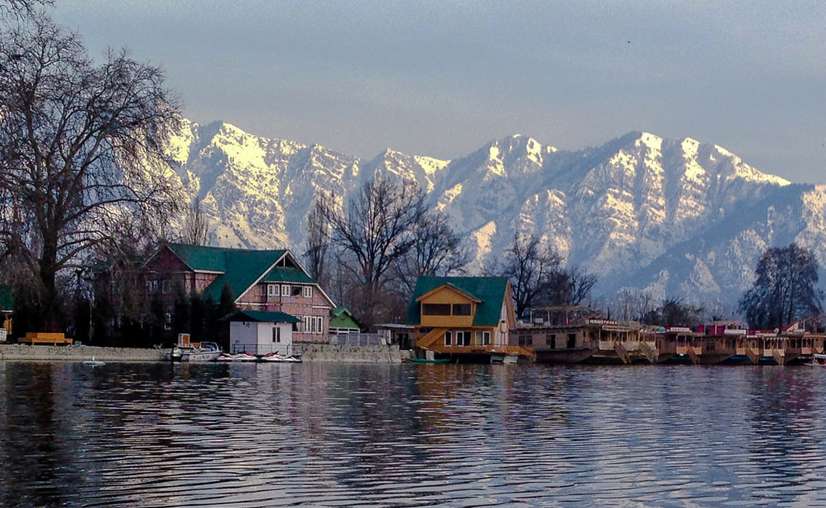
Nigeen Lake is a slightly eutrophic lake (alteratively spelled Nageen Lake). The lake is situated in Srinagar, Jammu, India and Kashmir. Often it is considered a part of the Dal lake and is linked through a narrow strait to it. It is also linked through a channel known as Nallah Amir Khan to the Khushal Sar and Gil Sar lakes.
A large number of willow and poplar trees surround Nigeen lake. Thus it has come to be referred to as “nageena,” meaning “the ring jewel.” A local version of the same word is the word ‘nigeen’.
The lake is adjacent to the hill of Hari Parbat, to the west of Lake Dal. The town of Hazratbal, which is renowned for its famous shrine, lies to its northeast.
In Srinagar, the lake is a major tourist attraction, renowned in contrast to the Dal lake for its relatively pristine waters. Houseboats and Shikaras are just an ordinary sight. It is also good for swimming, being deeper than the Dal lake and less crowded.
Shalimar Bagh
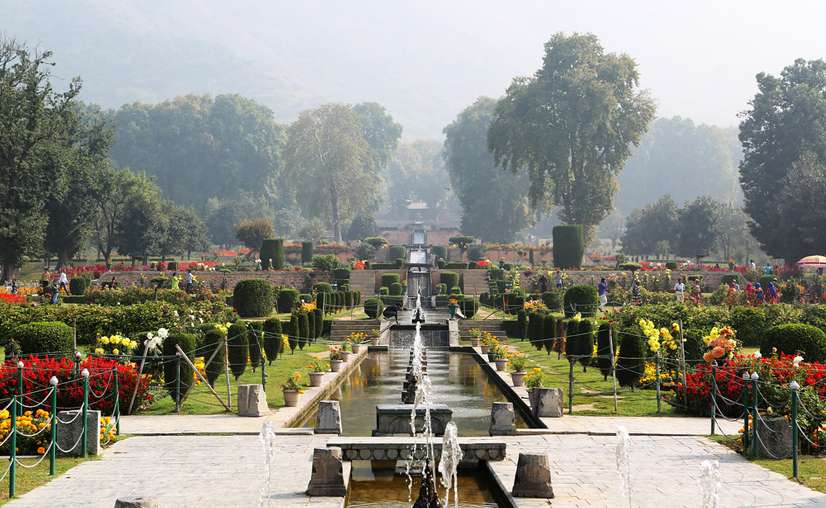
Shalimar Bagh is a Mughal garden in Srinagar, connected to its right bank on the outskirts of Srinagar City in Jammu and Kashmir, India, via a channel to the northeast of Dal Lake. Shalimar Garden, Shalimar Bagh, Farah Baksh and Faiz Baksh are her other names, and Nishat Bagh is the other popular shoreline garden in the vicinity. The Bagh was designed in 1619 for his wife, Noor Jahan, by the Mughal Emperor Jahangir. The Bagh is considered to be Mughal horticulture’s high point. It is a public park now. This time, it’s also called Srinagar’s Crown.
Situated on the right bank of the Dal, the Shalimar Bagh is dotted with old Chinar trees and exotic wild flowers. Your senses will be soothed and your nerves relaxed by the greenery, the gentle sound of flowing water, the delightful view of Dal Lake and the mountains here. The garden looks dusty and barren in the winter months and has a tired look, but even that is charming to look at. This is the best place to visit if you’re in the mood for a romantic walk or you enjoy landscape and nature photography. Scenes from many Bollywood movies have been filmed at the Shalimar Bagh, including Saat Khoon Maaf and Dil Kya Kare.
Nishant Bagh
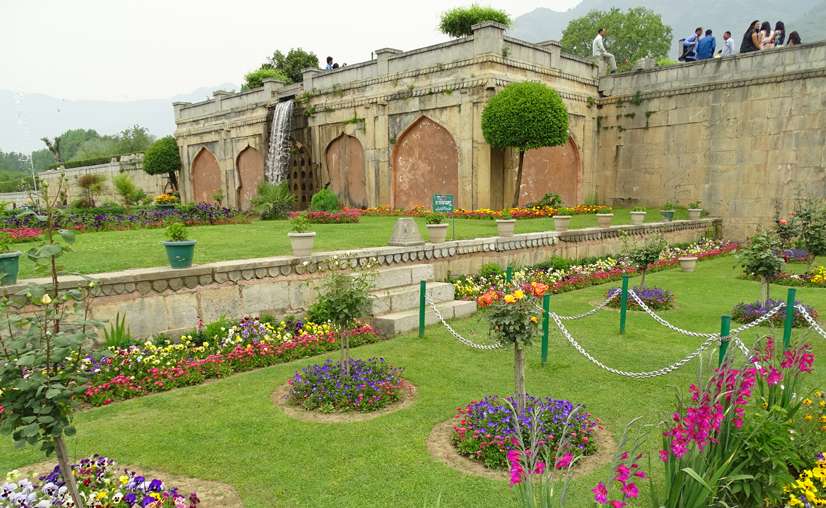
Nishat Bagh is a terraced Mughal garden constructed near Srinagar in the UT of Jammu and Kashmir, India, on the eastern side of the Dal Lake. It is the Kashmir Valley’s second largest Mughal garden. The Shalimar Bagh, which is also located on the Dal Lake shore, is the largest in size. ‘Nishat Bagh’ is Urdu, meaning “the Garden of Joy,” and the Garden of Delight.”
Nishat Bagh is a garden of paradise that commands a magnificent view of the lake underneath the snow-capped Pir Panjal mountain range that stands far to the west of the valley, situated on the bank of Dal Lake, with the Zabarwan Mountains as its backdrop. The Bagh was planned and constructed by Asif Khan, Nur Jehan’s elder brother, in 1633.
An fascinating story of Emperor Shah Jahan’s envy of beholding such a delightful garden, almost shutting down the garden for a moment, is narrated. When Shah Jahan saw this garden, he expressed great admiration of its grandeur and elegance after its completion in 1633. It is assumed that he expressed his gratitude to Asif Khan, his father-in-law, three times with the expectation that he will give it to him. Since Asif Khan had made no such bid, Shah Jahan was piqued and ordered that the water supply to the garden be closed.
Then the garden was abandoned for some time. Asif Khan was desolate and heartbroken; the series of events was uninterested in him. Resting under the shade of a tree on one of the terraces, his servant was brave enough to turn from the Shalimar Bagh to the water supply source. He was stunned when Asif Khan heard the sound of water and the fountains in motion, and immediately ordered the closure of the water supply, as he feared the emperor’s worst reaction to this gross act of disobedience. Fortunately for the servant and Asif Khan, the defiance of his orders did not disrupt or offend Shaha Jahan, who had learned about this incident in the garden. Instead, he appreciated the servant for his master’s faithful service and then ordered Asif Khan, his Prime Minister and father-in-law, to have full restoration rights for the supply of water to the garden. Mughal Princess Zuhra Begum, daughter of Mughal Emperor Alamgir II and granddaughter of Emperor Jahandar Shah, was buried in the cemetery.
Chashm-E-Shahi
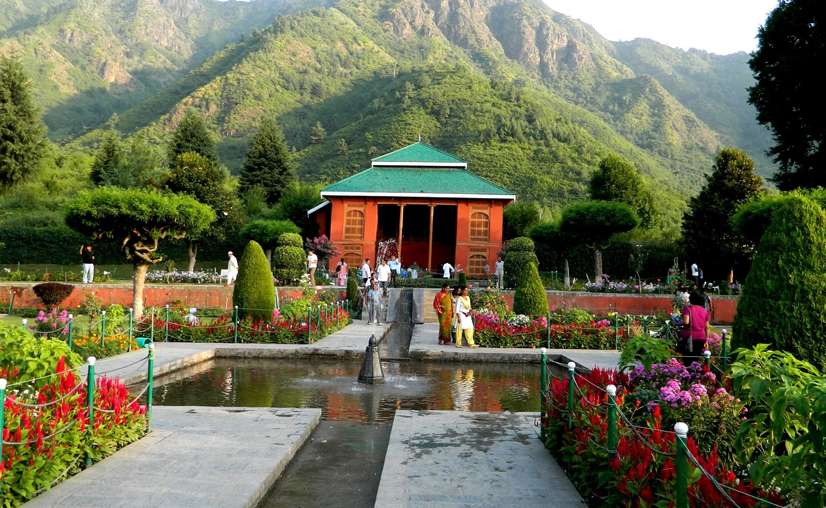
Also known as Chashma Shahi or Chashma I Shahi, Chashme Shahi is a translation of a royal spring. Chashme Shahi is one of the Mughal gardens designed around a spring in 1632 AD by Ali Mardan Khan, who was a governor of Mughal emperor Shah Jahan, the Chashme Shahi gardens was a gift for his elder son Prince Dara Shikoh, according to the orders of the Emperor. Chashme Shahi is situated near Raj Bhawan, overlooking Dal Lake in Srinagar, Kashmir, in the Zabarwan Range. Architecturally, the most beautiful garden near Srinagar is Chashme Shahi. This garden is 108 meters long and 38 meters wide and spreads over an acre of land. Among the three Mughal gardens of Srinagar, Chashme Shahi is the smallest garden, Shalimar garden is the biggest, and Nishat garden is the second largest of these three gardens. On the right bank of Dal Lake, all three of these gardens were installed, with the Zabarwan Mountains in the background. As used in various Mughal gardens, Chashme Shahi in Srinagar presents Mughal architecture. Chashme Shahi is an artistically designed garden that in its beautiful art and architecture, has Iranian influence and its design is based on Persian gardens.
Baramulla
Baramulla is a small town that is blessed with the most beautiful views because of the bucolic nature and is counted among the best places to visit in Srinagar. Wrapped on all sides by the mighty peaks of the Himalayas, the city is the paradise of any nature lover. It is home to many tourist attractions that draw the attention of tourists from all over India, such as Wular Lake and majestic stupas. Besides this, it also serves as Srinagar’s best picnic spot.
Sonmarg
Literally, the word Sonamarg translates into ‘land of gold’. Sonamarg is one of the country’s most beautiful locations and represents a stunning facet of Kashmir’s countryside. Located at an altitude of 2730 m, as its backdrop, one can see stunning snowy mountains. A sight to behold is the Sindh River that meanders through the magnificent valley. Ponies can be hired to ride up the Thajiwas Glacier. The Thajiwas glacier is situated at an altitude of 9,186 feet and is a major tourist attraction. Sonamarg is a striking silvery scene set against emerald meadows and blue sky, and is an all-time favorite place among the community of mountain photographers. Sonamarg is the base of a big trek that runs along some of the Vishansar, Kishansar, Gadsar, Satsar and Gangabal mountain lakes. It is also the foundation for the undertaking of the holy Yatra Amarnath.
Chatpal
This place is certainly a place to disconnect and get lost in the midst of mountains and lush green lawns adorned with wildflowers, situated in South Kashmir in the Shangus district. It seems like a perfect destination to get away from the insane rush of the city with only sounds from babbling brooks and birds chirping. There are few tourism resorts in J&K that are very inexpensive and easy on the wallet. With its beauty and quiet, serene atmosphere, this place has the potential to surprise you. Chatpal remains an untouched and remote place where there is no commercialization and there are some interesting nearby places to visit, as well as Aharbal Waterfall, Sonmarg, Lolab Valley, Gulmarg, Martand Temple and Kishtawar National Park.
Tulip Garden
In Kashmir, Tulip Garden is the largest tulip garden in Asia, and there is a possible hood that can also become the second largest in the world. The tulip garden is commonly known as Siraj Bagh in Srinagar and is situated on the banks of the famous Dal Lake. You can see the wide range of colors of the flowers when looking at the greenhouse, and there are over 60 varieties of early, mid and late flowering tulips.
They use the festival to promote the state as a chosen destination, the tourism authorities in the state said. “ot of Indians go to Holland just to see tulips, but now this place is near and more affordable for the domestic tourists. We feel we will get more tourists. We have come to know that about 12, 00 tourists and mostly outsiders have come here said Tanveer Jahan, a department of tourism secretary. There are approximately 60 varieties of multi-colored tulips in the garden at the foot of Zabarwan, overlooking the popular Dal Lake. The festival that also displayed the traditional art and culture of the state was an immediate success with the aliens. “You cannot find any of these products in other parts of India. I have not seen something like this,” said Peter Mathew, a Chilean tourist. The festival was also visited by a number of domestic visitors.
Dachigam National Park
In Jammu and Kashmir, Dachigam National Park is situated 22 km (kilometers) from Srinagar. It occupies a 141 sq km area (square kilometer). Literally, the name stands for ‘ten villages,’ which may be in memory of the ten villages displaced to establish the park.
To ensure the supply of clean drinking water to Srinagar city, Dachigam was initially created. Since 1910, it has been a protected area and was designated as a national park in 1981. Best known as the house of the hangul, or Kashmir stag, the park is. Dachigam is open all year round, but between April and August is the best time to visit. The nearest airport is Srinagar Airport. Kashmir Stag Habitat: Only the area where the Kashmir Stag is located.

